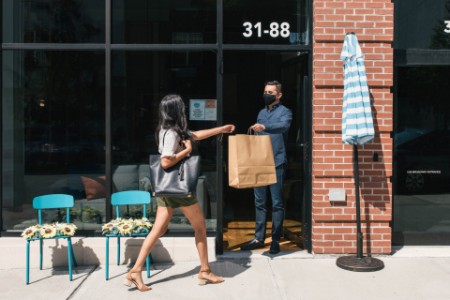Consumer companies must invest in the data, technology and systems required so they are able to deliver the kinds of exceptional consumer experiences that will give them a competitive edge and position them as the next customer-experience leaders.
3. Dynamic and agile supply chain planning
During the lockdown, inventory management became a problem as people started stockpiling and manufacturing went on freeze temporarily. A spike in online sales, abrupt consumption patterns, disrupted supplies and unpredictable future have made organizations realize that what worked till now, will not work in the future. How can companies accurately forecast demand and capture the impact of situations such as a pandemic? An effective way would be greater collaboration for demand sensing between retailers and manufacturers, especially for anomalies. Furthermore, automation of sales operations and creating a digital environment to manage their entire supply chain is critical if companies need to build sales resilience.
4. Innovation in customer connect
While people continue to remain socially distant, bringing offline experiences online will ensure they continue to connect with the brands they identify with. Even though digital marketing has been a focus for CPG companies, greater impetus must be placed on leveraging new age communication channels to create deeper engagement with consumers. Some social media platforms have already enabled CPG companies to gain higher traction by personalizing communication compared to traditional marketing channels.
Additionally, influencer marketing, YouTube channels, blogs, etc., are all being used to create excitement around brands, new launches, etc., and drive the end-users toward purchase. Companies are constantly innovating new ways of connecting with consumers. Adopting technologies, including Augmented Reality (AR) and Virtual Reality (VR), will completely change the way brands communicate, launch new products and engage with consumers, all while ensuring the safety of consumers is not compromised.
As social distancing continues to be the norm, bringing offline experiences online will ensure continued customer engagement with an organization’s brand. The next step, however, must now be a bigger focus on leveraging new age communication channels with the aim of creating deeper consumer engagement.
To remain relevant and adapt to changing consumer behaviors, CPG companies must adopt agile operating models to lead in this dynamic environment. Digital is becoming an integral part of the customer’s purchase journey. Organizations need to analyze consumer consumption data in existing digital channels, modify assortments, build a robust network, and simplify and optimize UI/UX to enable a better customer buying experience. Physical stores should allow frictionless shopping, redesign store layouts, streamline store operations and reevaluate store networks to increase consumer confidence in physical channels. This must be supported by flexible delivery models and robust supply networks (fungible stores and warehouses).
A superior personalized experience can be achieved by enabling a seamless purchase journey for the consumer with close collaboration between physical and digital channels and being innovative in building omnichannel capabilities. In the long run, achieving these objectives will future-proof organizations and help them retain their competitiveness.
Summary
The COVID-19 pandemic has created what many expect to be irreversible trends in customer behaviors. But there is a competitive advantage to be gained by CPG companies that embrace this new reality and adopt emerging trends, such as agile supply chain planning and innovative ways to connect with customers.


